Temples & Shrines
Update:2024/6/21
- Myokokuji Temple
- Kakuoji Temple
- Sugawara Shrine
- Aguchi Shrine
- Nanshuji Temple
- Mozuhachimangu Shrine
- Hochigai Shrine
- Otori Grand Shrine
- Ebaraji Temple
- Sakurai Shrine
- Tajihayahime Shrine
- Hodoji Temple
- Honganji Temple, Sakai Branch
- Hounji Temple
Myokokuji Temple
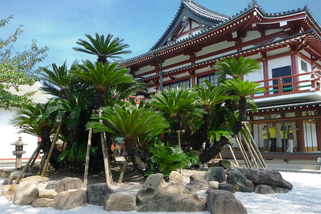
Myokokuji Temple was constructed in 1562. Legend has it that the giant cycad trees on the temple's grounds were once transplanted to Azuchi Castle in accordance with the wishes of Oda Nobunaga but were subsequently returned to Sakai as they cried nightly of their desire to return. The trees have been designated a Natural Monument. The temple is also famous as the site where 11 Tosa samurai committed ritual suicide following the Sakai Incident in 1868.
Hours: 10:00-16:30 (groups of 15 or more require reservation)
Admission: 400 yen
Access: Myokokujimae Station (Hankai Tramway). Parking is also available
Address: 4-1-4 Zaimokucho-higashi, Sakai-ku
TEL: 072-233-0369
Kakuoji Temple
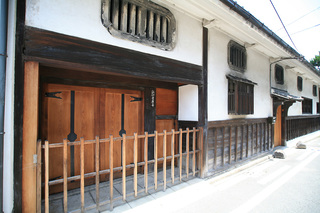
Also known as Shochuzan Kakuoji Temple. Its founder Michimoto Kono, the head of a powerful Iyo family, converted to Buddhism under the monk Kakunyo and took the name Kakuo. Later head monk Kono Tetsunan introduced the writers Yosano Akiko and Yosano Tekkan, and there is a monument on the grounds with an inscribed poem commemorating Yosano Akiko. Every year a memorial service is observed on May 29, Akiko's birthday.
Hours/admission: None/free
Access: Shinmeicho Station (Hankai Tramway)
Address: 3-1-49 Kuken-cho-Higashi, Sakai-ku
TEL: 072-238-6835
Sugawara Shrine
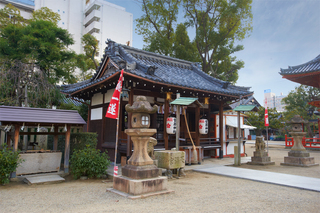
Sugawara shrine is said to have originated in a festival celebrating a wooden statue of Sugawara-no-Michizane found washed ashore on a Sakai beach. The shine is variously known as Tenjinsan and Ebessan. The shrine is also well known as a prime spot for watching fireflies in the summer, and its Sakuramon Gate has been designated an official cultural property by Osaka Prefecture.
Hours: None (reception open 9:00-17:00)
Admission: Free
Access: Hanadaguchi Station (Hankai Tramway)
Address: 2-1-38 Ebisuno-cho-Higashi, Sakai-ku
TEL: 072-232-2450
Website: http://www.sakaitenjin.or.jp/
Aguchi Shrine
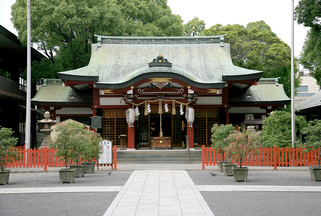
The only shrine that conforms to the Engi Code in the old city of Sakai, Aguchi Shrine enshrines the gods of Shiotsuji-no-oji-no-kami,Susano-o-no-mikoto, and Ikutama-no-mikoto. In the year 746, the monk Gyoki built Nembutsuji Temple on the current shrine's grounds. In 806, the monk Kukai added a pagoda, and the temple came to be known as Otera Temple. The Otera Picture Scrolls, a collection of tanka poems composed by the emperor Fushimi, and the Yoshimitsu dagger have been designated Important Cultural Properties.
Hours: None (reception open 9:00-17:00)
Admission: Free
Access: Shukuin Station (Hankai Tramway)
Address: 2-1-29 Kaino-cho-Higashi, Sakai-ku
TEL: 072-221-0171
Website: https://aguchi.jp/
Nanshuji Temple
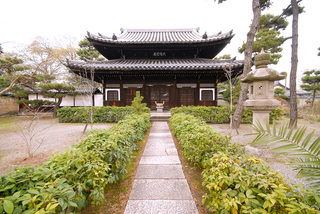
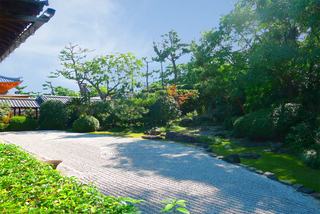
Originally built by Miyoshi Chokei in 1557 and founded by Dairin Soto, the 90th head priest of Daitokuji Temple, Nanshuji Temple burned to the ground during the battle fought between Toyotomi Hideyoshi and Tokugawa Ieyasu. It was rebuilt by Takuwan in 1617. On its grounds is a landscaped garden that has been designated a national scenic site, a pagoda built in memory of the Sen family, and the Jissoan teahouse.
Hours: 9:00-16:00
Admission: Adults 400 yen, middle and high school students 300 yen, children 200 yen
Access: Goryomae Station (Hankai Tramway)
Address: 3-1-2 Minamihatago-cho-Higashi, Sakai-ku
TEL: 072-232-1654
Mozuhachimangu Shrine
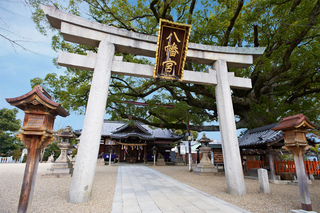
Mozuhachimangu Shrine is said to have been constructed in the time of the Kinmei Emperor (532 to 571). Standing in front of the shrine is a giant 800-year old camphor tree that has been designated a natural monument by Osaka Prefecture.
Hours: None (reception open 9:00-17:00)
Admission: Free
Access: Mozu Station (JR Hanwa Line) or Mozuhachiman Station (Nankai Koya Line)
Address: 5-706 Mozuakahata-cho, Sakai-ku
TEL: 072-252-1089
Website: https://www.mozu8.com/
Hochigai Shrine
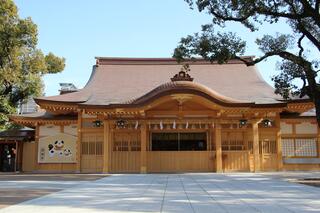
Long ago when travelers' journeys would take them in an unlucky direction, they would first set out in a direction other than their intended one. Built as a place for such travelers to pray, Hochigai Shrine is unusual in all Japan. At the Chimaki Festival held every year on May 31, participants are given chimaki cakes wrapped in wild rice leaves.
Hours: 9:00-16:00
Admission: Free
Access: Sakaihigashi Station (Nankai Koya Line)
Address: 2-2-1 Kitamikunigaoka-cho, Sakai-ku
TEL: 072-232-1216
Website: http://www.hochigai-jinja.or.jp/
Otori Grand Shrine
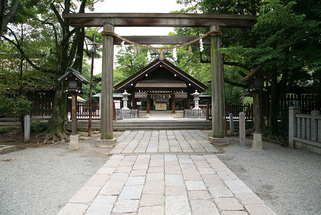
The most important shrine in ancient Izumi, Otori Shrine is notable for its otori-style inner shrine, which is typical of ancient Japanese Shinto architecture. It is said that the mythical hero Yamatotakeru-no-Mikoto turned into a white swan at his death and last stopped at the site of Otori Shrine, prompting people living nearby to build the shrine to worship white swans. The shrine's grounds, which extend over more than 50,000 square meters, are known as "Chikusa-no-Mori" due to the seemingly endless variety of tree species found there.
Hours: 5:30-18:00 (reception open 9:00-16:30)
Admission: Free
Access: Otori Station (JR Hanwa Line)
Address: 1-1-2 Otorikita-machi, Nishi-ku
TEL: 072-262-0040
Website: https://www.ootoritaisha.jp/
Ebaraji Temple
Ebaraji Temple stands at the birthplace of Gyoki, a monk from the Nara period who is known as the "bodhisattva of wisdom". The temple is a popular destination for students taking entrance exams, who stuff handkerchiefs on which they have written prayers for good luck and success on their tests into cracks in the main hall's walls and columns.
Hours: 9:00-17:00
Admission: 500 yen (free for high school students and younger)
Access: Tsukuno Station (JR Hanwa Line)
Address: 1-8-20 Ebaraji-cho, Nishi-ku
TEL: 072-271-1505
Website: https://yakushi49.jp/15ebaraji/
Sakurai Shrine
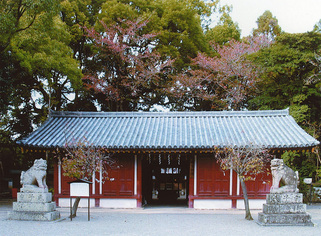
Called the "Hachiman of Niwadani," Sakurai Shrine has dignified wood and white plaster walls that are considered to be a Kamakura period architectural style. It is the only structure in Sakai to have been designated an important national building. The Ko-odori dance, an Intangible Cultural Asset, is performed every year on the first Sunday in October.
Hours: 6:00-19:00 (reception open 9:00-16:00)
Admission: Free
Access: Sakuraijinjamae bus stop (Nankai Bus)
Address: 645 Katakura, Minami-ku
TEL: 072-297-0043
Tajihayahime Shrine

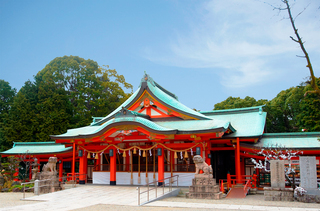
Located in Kozen Park, Tajihayahime Shrine is known as the god of childbirth, marriage, and warding of evil. The main hall, which has been designated an Important Cultural Property, features distinctive curved gables in the manner of Muromachi-period architecture as well as rare and colorful carvings of praying mantises, abalone, and conches. The shrine is also famous for its Japanese plum (ume) and cherry trees.
Hours: 9:00-12:00 & 13:00-16:00
Admission: Free
Access: Miyayamadai-2cho bus stop (Nankai Bus)
Address: 2-3-1 Miyayamadai, Minami-ku
TEL: 072-297-0726
Website: https://tajihayahime.com/
Hodoji Temple
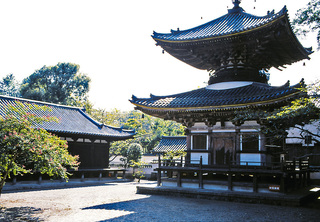
This ancient temple was built in the year 670. Its grounds stretch out on the other side of a distinctive gate and include a refectory from the mid-Kamakura period that has been designated an Important Cultural Property as well as a pagoda with a Japanese-style first floor built in the Muromachi period and a Chinese-style second floor. The shrine is set amidst great natural beauty and stands across from the city cemetery, which is famous for its cherry trees.
Hours/admission: None/free
Access: Hachigamine bus stop (Nankai Bus)
Address: 401 Hachigamineji, Minami-ku
TEL: 072-297-0705
Honganji Temple, Sakai Branch
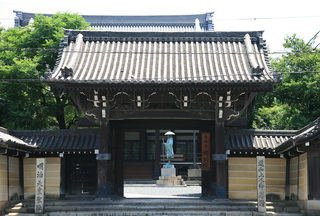
The largest wooden structure in Sakai, the current main hall was rebuilt in 1825. It served as the offices of the Sakai prefectural government for a period of 10 years starting in 1871 and is also known as the "Northern Temple."
Hours/admission: None/free
Access: Shinmeicho Station (Hankai Tramway)
Address: 3-1-10 Shinmei-cho-Higashi, Sakai-ku
TEL: 072-232-4417
Website: http://www.sakaibetsuin.or.jp/
Hounji Temple
Hounji Temple is a temple of Zen Buddhism's Obaku sect, which was founded in 1672 by Egoku Domyo, one of the three great Obaku monks. Its 3,333 square meter grounds includes the Sanmon Gate; structures including Tennoden, Otono (main hall), Kaisando, and Yosenden; the chief priest's residence; and a bell tower. The temple provides a glimpse into the architectural organization of large Buddhist temples at the time, and the Otono main hall houses 3,333 statues of the Buddha. It is extremely famous for its many azaleas, the official flowering shrub of Sakai, and it receives more than 1,000 visitors a day during the peak flower-viewing season.
Hours/admission: None/free
Access: Imai bus stop (Kintetsu Bus) or Imaiminami bus stop (Nankai Bus)
Address: 192 Imai, Mihara-ku
TEL: 072-361-4419
Website: https://www.oubaku.org/houun/
